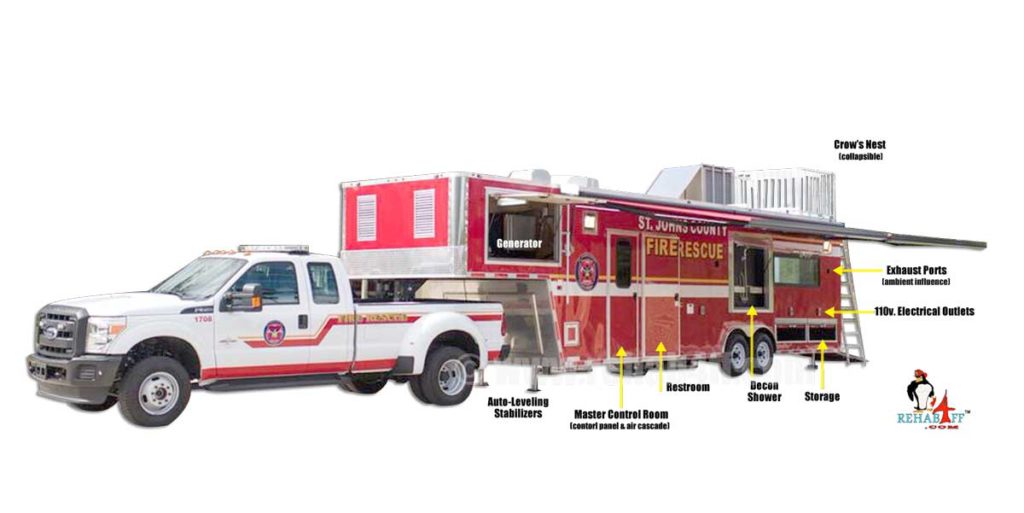What are common uses of a mobile command center? These vehicles most frequently used as mobile bases and communication centers in the field. These units are often stationed near a crisis center or natural disaster. They are also designed to operate autonomously in areas where electricity, water, and food is unavailable or in limited supply.
Government agencies, law enforcement, fire departments and health care organizations use mobile command centers in different ways, but the reality is you can accomplish almost any desired goal inside one of these advanced units. As long as the command center is preinstalled with the right equipment and designed thougtfully, you can accomplish the same goals as in a fixed facility, albeit usually in a smaller space.
In this post, we catalog common ways agencies use mobile command centers. If you’re in the market for a mobile command center, we also recommend starting by organizing a list of use cases for the unit along with specialized equipment needed to complete each task.
It’s critical that you work with a manufacturer that takes the time to not just understand the equipment you need installed, but your workflows as well. Otherwise, staff could end up with too little space to operate inside the vehicle efficiently and comfortably. If your organization is planning to operate in areas left without electricity, power requirements must also be considered. By understanding your organizational needs first, an experienced manufacturer will be able to ensure the mobile facility has been designed to meet your needs in the field.
Organizations That Use Mobile Command Centers

Fire Departments: Fire fighters find themselves in remote areas without nearby access to food, restrooms, or shelter for days or even weeks at a time. The mobile command center above has been outfitted to help fire departments provide better support for serious fires. Some of the features in this unit include a decontamination shower and restroom for firemen and women in the field. There is also a built in control room that serves as a dispatch and communication hub while in the field that includes WIFI access. Finally, there is a crow’s nest positioned the top of the unit to survey the scene.
Law Enforcement: Police departments are another group that benefit from these units, although the equipment installed is different than fire departments. From a communication standpoint, dispatchers can be setup to provide nearby surveillance using direct satellite communication systems and night vision cameras mounted to remote controlled telescopic poles.
Conference rooms can also be installed that offers a mobile strategy and planning area to conduct sting operations. These units can also be installed with lockers and storage units to transport supplies. Kitchen areas and bathrooms can also be installed to support longer term operations.
Government Agencies: There are many government agencies that can provide support with disaster relief in times that require an immediate response. These units can be equipped to provide basic health care, food service, and temporary shelter for those impacted by a major storm or other natural disaster. Groups that regularly utilize units like this in natural disasters include FEMA, International Medical Corp., and The Red Cross.
Hospitals and Healthcare Organizations: Hospitals often need a mobile command center to provide support where patients need help most. Mobile command centers can aid in processing patients, providing routine checkups, and even conduct emergency on-site surgeries if needed.
Of course these command centers are not only useful in disaster situations. Units can be converted to assist in everyday scenarios by hold blood drives. Other units can travel to areas where patients, including the elderly, may not be able to access high-quality healthcare services.
If you’re researching a mobile command center, contact M&R Specialty Trailers and Trucks. We specialize in building mobile units that meet your organizations specialized needs and specifications.
